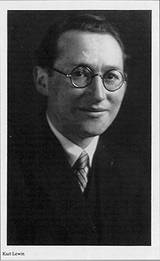by Charles Plant | Nov 6, 2012 | Leaders
 So what would you do if you became CEO of a near bankrupt company? Cut staff? Improve operations? Renegotiate loans? Or instead would you take on the competitors by introducing a completely new product line, one that competitors haven’t even thought of? Turnarounds are perhaps the most ambiguous situation a leader can face. Not only is there great ambiguity but the pressure is intense, the cost of failure is high, and the risks are enormous.
So what would you do if you became CEO of a near bankrupt company? Cut staff? Improve operations? Renegotiate loans? Or instead would you take on the competitors by introducing a completely new product line, one that competitors haven’t even thought of? Turnarounds are perhaps the most ambiguous situation a leader can face. Not only is there great ambiguity but the pressure is intense, the cost of failure is high, and the risks are enormous.
That’s pretty much the situation Lee Iacocca faced when he tacked the thorny problem of rescuing Chrysler in 1978. Iacocca did all the regular things a turnaround CEO does, renegotiating contracts with car-rental agencies, laying off workers, and getting bailed out to the tune of $1.5 billion from the feds. These were not the keys though to the re-emergence of Chrysler.
Where Iacocca succeeded was in figuring out where the market for cars was going and introducing two completely new types of vehicles. While the genesis of both new cars predated his arrival at Chrysler, Iacocca gets the credit for tweaking designs and building market dominance.
Iacocca’s first innovation was the compact to mid-sized K-car line in 1981. These cars gained quick market acceptance due to their compact size, low price and front wheel drive.
The second innovation was the introduction of the minivan in 1983, an entirely new category of vehicle that sold 210,00 units in the first full year of production and have gone on to sell over 12 million units, dominating the category since inception.
The ambiguity for Iacocca was in where to allocate the company’s scarce resources. In a turnaround you can only do so much in a short period of time and it is critical to make the right decisions. Iacocca deserves all the credit he gets for his success particularly because he took the riskiest path to a turnaround by introducing two completely new types of vehicles.
by Charles Plant | Oct 24, 2012 | Leaders
 James Dyson hit number 255 on Forbes list of billionaires with a net worth of $4.2 billion because he is good at problem identification.
James Dyson hit number 255 on Forbes list of billionaires with a net worth of $4.2 billion because he is good at problem identification.
He discovered the problem that all vacuum cleaners had by using his Hoover Junior vacuum cleaner which became clogged quickly and lost suction over time. Becoming frustrated with its performance, he emptied the bag to try to restore the suction but this didn’t work. When he opened the bag, he noticed a layer of dust inside. The mesh in the bag was clogged, preventing the machine working properly. In fact, the machine only worked properly with a fresh bag. This was the first root cause he identified.
He developed the cyclonic action used in all current Dyson vacuums to solve this problem but was unable to license this development to other vacuum cleaner companies. And why was that? Well, these companies made their money, not from selling vacuums, but from selling the bags that went with it. No wonder no one had tried to solve this problem before. Second problem identified.
“Be thankful for problems. If they were less difficult, someone with less ability might have your job.” James A Lovell
by Charles Plant | Oct 23, 2012 | Leaders
 One of the first steps in solving a problem is identifying the issues and if you can, the root cause. I’ve watched a bit of the presidential debates on TV and thought it would be interesting to see what Obama and Romney think the root causes are for America’s economic malaise. So I went trolling on their websites to see if I could identify what is the basis for one of the biggest differences between the candidates.
One of the first steps in solving a problem is identifying the issues and if you can, the root cause. I’ve watched a bit of the presidential debates on TV and thought it would be interesting to see what Obama and Romney think the root causes are for America’s economic malaise. So I went trolling on their websites to see if I could identify what is the basis for one of the biggest differences between the candidates.
In short, “Romney believes that the government is an impediment to economic growth and should mostly get out of the way. The president argues that the government plays a vital role in creating the foundation for a strong economy.” (www.washingtonpost.com) What is interesting here is that Romney is identifying a cause whereas Obama has not done so but jumps straight to a conclusion (of platitudes).
“President Obama has a plan to grow the economy from the middle class out, not the top down. We can’t just cut our way to prosperity, and we can’t go back to the same failed policies that caused the economic crisis and punished middle-class families.” (www.barackobama.com) “President Obama and Democrats are fighting to strengthen our economy further and create jobs for American workers by ending tax loopholes for corporations, providing tax cuts to small businesses, investing in a clean-energy economy, and putting Americans to work rebuilding our infrastructure. (www.democrats.org)
I’ve checked a bunch of websites and have yet to find anywhere that Obama has stated what he believes to be the cause of the failed recovery. He tends to blame everything on 2008 but can’t explain why there has been such a slow recovery.
“Mitt Romney will rebuild the foundations of the American economy on the principles of free enterprise, hard work, and innovation. His plan seeks to reduce taxes, spending, regulation, and government programs. It seeks to increase trade, energy production, human capital, and labor flexibility. It relinquishes power to the states instead of claiming to have the solution to every problem.” (www.mittromney.com)
To Romney, the government is the problem and he believes that high taxes, regulation, and federal meddling are hurting the economy. Very clear problem identification but altogether too easy an explanation when there are so many things that are contributing to the Great Recession.
You can’t solve a problem until you identify the root cause. Romney has trotted out a hoary shibboleth and Obama hasn’t even tried to identify the root cause. With this lack of vision, we’ll be lucky to see much economic growth over the next few years in the US.
A pox on both their houses.
by Charles Plant | Oct 16, 2012 | Leaders, Research
 Kurt Lewin, who died in 1947, was one of the pioneers of social, organizational and applied psychology. He was one of the first people to study group dynamics and organizational development. What is most interesting about his work is his study of leadership. If you’ve ever worked for a mercurial leader, one whose mood you couldn’t predict, then Kurt’s work goes a long way to explain that person’s behaviour.
Kurt Lewin, who died in 1947, was one of the pioneers of social, organizational and applied psychology. He was one of the first people to study group dynamics and organizational development. What is most interesting about his work is his study of leadership. If you’ve ever worked for a mercurial leader, one whose mood you couldn’t predict, then Kurt’s work goes a long way to explain that person’s behaviour.
According to Lewin, behaviour is a function of the person in their environment. What this means to say is that if you take one person in one environment it is likely that he or she will behave differently in a different environment. This has a few implications at work:
- A boss you like at one workplace isn’t necessarily going to be the same boss at the next workplace and that following him or her to a new workplace might be an error.
- If also means that a person who is successful in one environment isn’t necessarily going to be successful in another.
- In addition, if an environment changes, you may have to look for a different leader, one who can function more effectively in the new environment.
If you’re finding that your behaviour at work is changing (for the worse) then you may be better off finding a new environment that fits your behaviour style better. Ask yourself; In which environments are you successful and in which ones do you fail? Don’t just search for the right job, search as well for the right environment.
by Charles Plant | Oct 10, 2012 | Leaders
I watched a great TED Talk today that covers a wide range of interconnected fields in technology, design, art, and leadership. Very inspiring.
Make sure you watch to the end as he uses art to display a new way of looking at an organizational chart.
by Charles Plant | Oct 3, 2012 | Leaders
 Sam Walton, founder of Wal-Mart was a great believer in looking at strengths, weaknesses, opportunities and threats, SWOT, on a regular basis. So much so that he made it part of their regular Saturday management meetings. In Sam’s own words:
Sam Walton, founder of Wal-Mart was a great believer in looking at strengths, weaknesses, opportunities and threats, SWOT, on a regular basis. So much so that he made it part of their regular Saturday management meetings. In Sam’s own words:
“That Saturday morning meeting is very much about business. Its purpose is to let everyone know what the rest of the company is up to. If we can, we find heroes among our associates and bring them to Bentonville, where we praise them in front of the whole meeting.(Strengths)
“But I don’t like to go to the meeting and hear about just the good things that are happenning. I like to hear what our weaknesses are, where we aren’t doing as well as we should and why. I like to see a problem come up and then hear suggestions as to how it can be corrected. If we decide we’re doing something wrong, and the solution is obvious, we can order changes right then and carry them out over the weekend, while most everybody else in the retail business is off.
“The Saturday morning meeting is where we discuss and debate much of our philosophy and our management strategy (Threats): it is the focal point of all of our communication efforts. It’s where we share ideas (Opportunities) we’ve picked up from various places.”
 So what would you do if you became CEO of a near bankrupt company? Cut staff? Improve operations? Renegotiate loans? Or instead would you take on the competitors by introducing a completely new product line, one that competitors haven’t even thought of? Turnarounds are perhaps the most ambiguous situation a leader can face. Not only is there great ambiguity but the pressure is intense, the cost of failure is high, and the risks are enormous.
So what would you do if you became CEO of a near bankrupt company? Cut staff? Improve operations? Renegotiate loans? Or instead would you take on the competitors by introducing a completely new product line, one that competitors haven’t even thought of? Turnarounds are perhaps the most ambiguous situation a leader can face. Not only is there great ambiguity but the pressure is intense, the cost of failure is high, and the risks are enormous.



